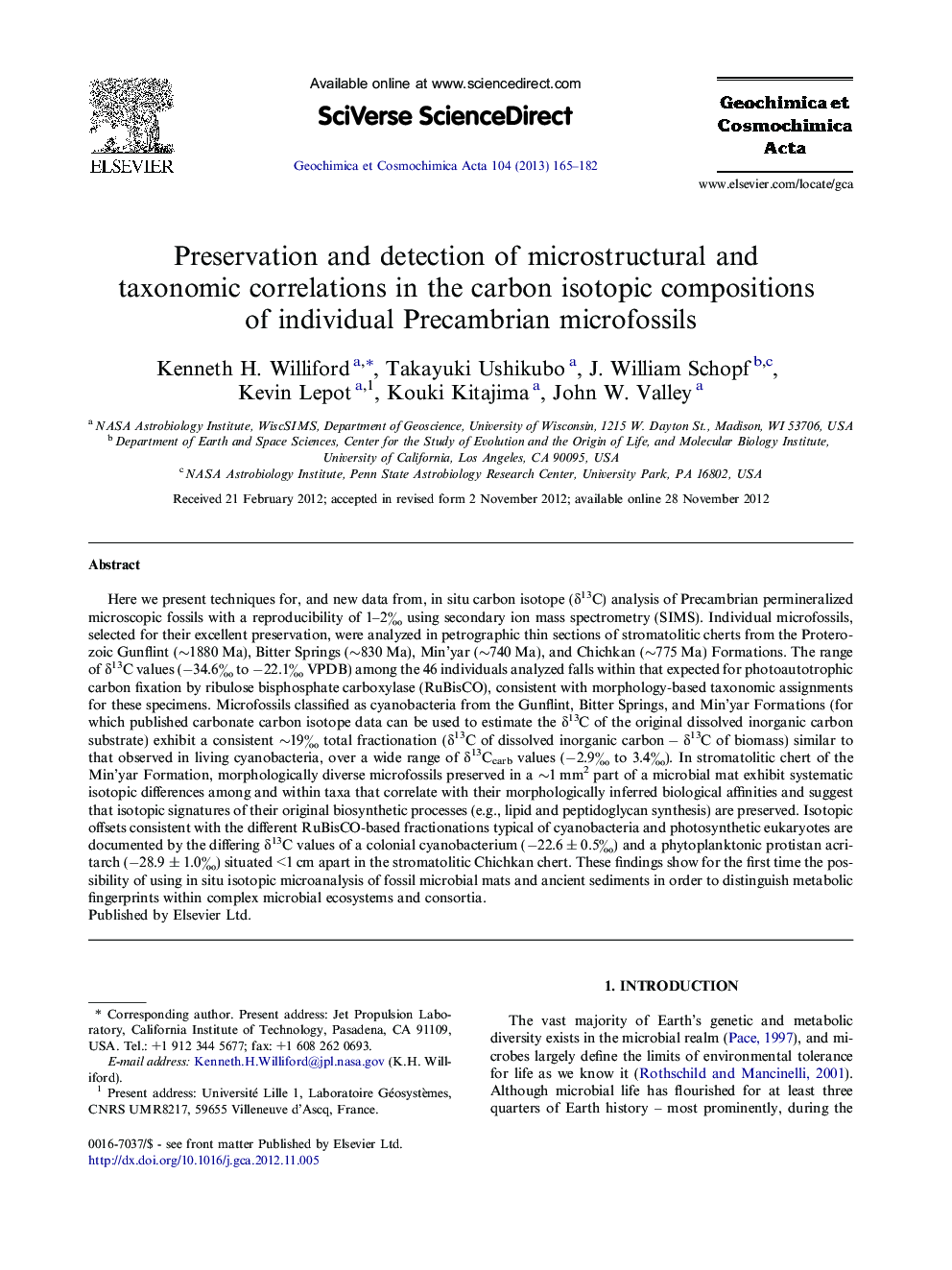| کد مقاله | کد نشریه | سال انتشار | مقاله انگلیسی | نسخه تمام متن |
|---|---|---|---|---|
| 4702597 | 1638053 | 2013 | 18 صفحه PDF | دانلود رایگان |
Here we present techniques for, and new data from, in situ carbon isotope (δ13C) analysis of Precambrian permineralized microscopic fossils with a reproducibility of 1–2‰ using secondary ion mass spectrometry (SIMS). Individual microfossils, selected for their excellent preservation, were analyzed in petrographic thin sections of stromatolitic cherts from the Proterozoic Gunflint (∼1880 Ma), Bitter Springs (∼830 Ma), Min’yar (∼740 Ma), and Chichkan (∼775 Ma) Formations. The range of δ13C values (−34.6‰ to −22.1‰ VPDB) among the 46 individuals analyzed falls within that expected for photoautotrophic carbon fixation by ribulose bisphosphate carboxylase (RuBisCO), consistent with morphology-based taxonomic assignments for these specimens. Microfossils classified as cyanobacteria from the Gunflint, Bitter Springs, and Min’yar Formations (for which published carbonate carbon isotope data can be used to estimate the δ13C of the original dissolved inorganic carbon substrate) exhibit a consistent ∼19‰ total fractionation (δ13C of dissolved inorganic carbon − δ13C of biomass) similar to that observed in living cyanobacteria, over a wide range of δ13Ccarb values (−2.9‰ to 3.4‰). In stromatolitic chert of the Min’yar Formation, morphologically diverse microfossils preserved in a ∼1 mm2 part of a microbial mat exhibit systematic isotopic differences among and within taxa that correlate with their morphologically inferred biological affinities and suggest that isotopic signatures of their original biosynthetic processes (e.g., lipid and peptidoglycan synthesis) are preserved. Isotopic offsets consistent with the different RuBisCO-based fractionations typical of cyanobacteria and photosynthetic eukaryotes are documented by the differing δ13C values of a colonial cyanobacterium (−22.6 ± 0.5‰) and a phytoplanktonic protistan acritarch (−28.9 ± 1.0‰) situated <1 cm apart in the stromatolitic Chichkan chert. These findings show for the first time the possibility of using in situ isotopic microanalysis of fossil microbial mats and ancient sediments in order to distinguish metabolic fingerprints within complex microbial ecosystems and consortia.
Journal: Geochimica et Cosmochimica Acta - Volume 104, 1 March 2013, Pages 165–182
